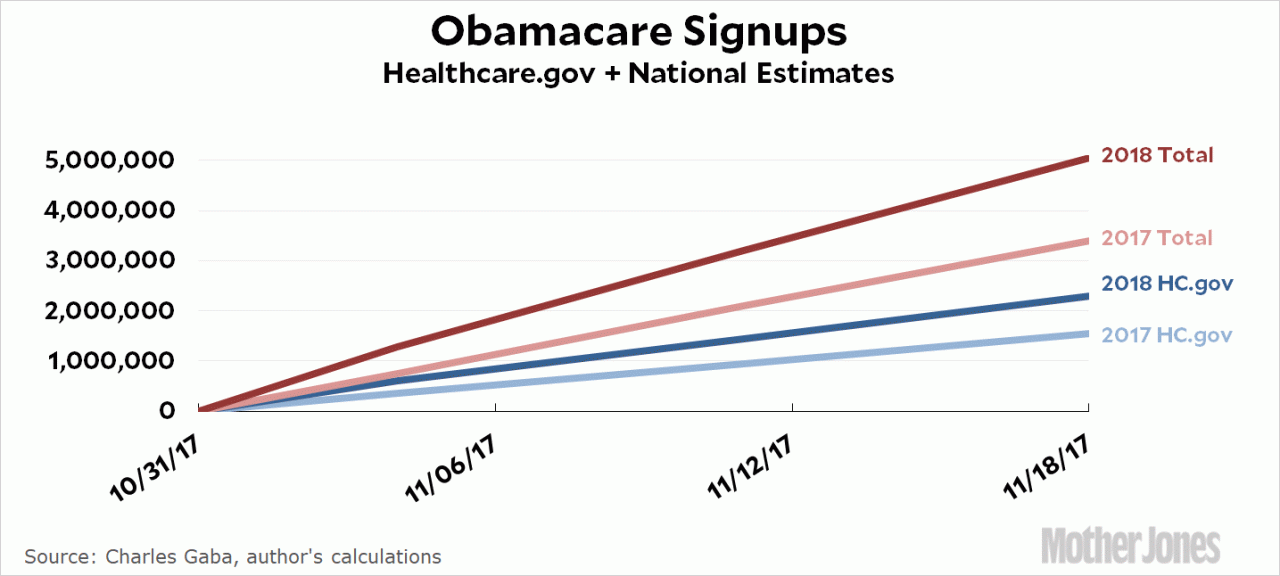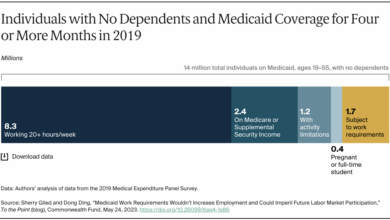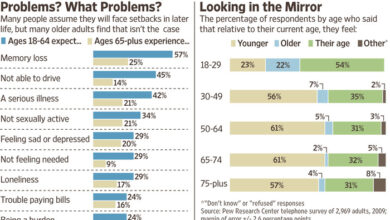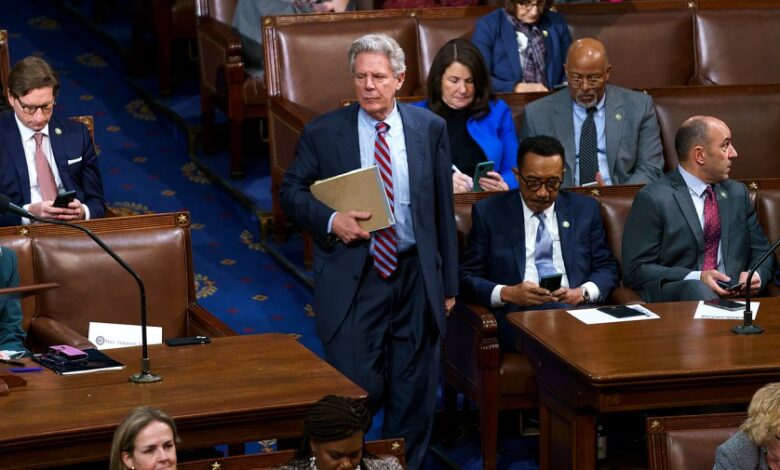
Medicaid cuts in republican health plan are poised to significantly reshape the American healthcare landscape. This proposed policy promises substantial reductions in Medicaid funding, impacting various aspects of healthcare access and affordability. The plan details several methods of achieving these cuts, from adjusting funding formulas to targeting specific programs. Understanding the potential ramifications for different demographics, healthcare infrastructure, and the overall economy is crucial for informed discussion.
This analysis will explore the proposed cuts in detail, examining the historical context of Medicaid, the potential impacts on access to care, state and local communities, and the broader economic implications. We’ll also consider alternative approaches to cost management and delve into public opinion and political responses to this controversial policy.
Overview of Medicaid Cuts in Republican Health Plan
The Republican health plan frequently proposes substantial reductions in Medicaid funding, a crucial program for low-income Americans and those with disabilities. These cuts, often presented as necessary for fiscal responsibility, aim to reshape the healthcare landscape by shifting financial burdens and potentially altering access to care. The specific methods and consequences of these reductions remain contentious, with arguments about their impact on public health and financial stability.
Proposed Methods of Medicaid Funding Reduction
The Republican health plan typically employs various approaches to reduce Medicaid spending. One common strategy involves capping or limiting federal matching funds for state Medicaid programs. This means that states receive less federal money to cover the cost of Medicaid services, forcing them to make up the difference with their own resources or by reducing services. Another method involves placing restrictions on the expansion of Medicaid eligibility, effectively limiting the number of people who can access the program.
This often focuses on those who have gained coverage through the Affordable Care Act (ACA) expansion. A third approach centers on incentivizing states to adopt alternative healthcare models, such as managed care organizations, that aim to deliver care more efficiently, though cost savings are often debated. These methods are often intertwined and can have cumulative impacts on the Medicaid program.
Specific Programs and Services Potentially Affected
Medicaid funding cuts could significantly affect various programs and services crucial for the well-being of beneficiaries. Preventive care, including vaccinations and screenings, could be curtailed. Access to mental health services, crucial for individuals facing mental illness, may also be compromised. Long-term care services, essential for the elderly and disabled, could experience reduced availability. Prescription drug coverage, a critical component of healthcare for many, might also face limitations.
These are not exhaustive, but illustrate the wide-ranging potential impact.
Potential Impacts on Different Demographics
The cuts would likely disproportionately affect vulnerable populations. Low-income individuals, children, pregnant women, and people with disabilities rely heavily on Medicaid for essential healthcare services. Reduced access to care could lead to increased rates of preventable illnesses, complications from chronic conditions, and exacerbate existing health disparities. Elderly individuals relying on Medicaid for long-term care could face reduced support, increasing the burden on families and potentially leading to poorer quality of life.
These impacts would disproportionately affect those already facing socioeconomic disadvantages. Furthermore, states with higher percentages of low-income residents and those with larger Medicaid populations would experience more severe budgetary pressures and potentially have to make difficult choices about which services to cut.
Historical Context of Medicaid
Medicaid, a joint federal-state program, provides healthcare coverage to low-income individuals and families. Its history reflects shifting societal priorities regarding healthcare access and the balance between federal and state roles in social welfare programs. Understanding this history is crucial for evaluating proposed changes, particularly cuts, to the program.The program’s evolution demonstrates a complex interplay of economic conditions, political pressures, and evolving healthcare needs.
Initially conceived as a safety net, Medicaid’s scope and funding have expanded and contracted throughout its existence, often mirroring broader economic trends and political agendas. Examining previous attempts at reform provides context for assessing the potential impact of current proposals.
Funding Evolution and Historical Averages, Medicaid cuts in republican health plan
Medicaid’s funding has fluctuated significantly over time. Initial funding levels were relatively modest, reflecting the program’s nascent stage and the prevailing economic climate. Subsequent years witnessed periods of increased funding, often driven by demographic shifts, rising healthcare costs, and changing social welfare priorities. Analyzing historical funding patterns reveals trends of both sustained growth and periods of stagnation or decline.
These trends are crucial for understanding the potential implications of proposed cuts. For instance, the 1990s saw increased funding for Medicaid, largely due to increased enrollment and healthcare inflation. This trend continued until the early 2000s, when funding levels stabilized in some areas.
Comparison to Current Funding Levels
Comparing current funding levels to historical averages reveals a nuanced picture. While absolute funding amounts have risen, the rate of increase may have lagged behind the growth in healthcare costs. This disparity highlights the challenge of maintaining Medicaid’s financial viability in the face of rising healthcare expenses. For example, if healthcare costs increase by 5% annually, and Medicaid funding only increases by 3%, the program’s ability to cover services may decrease over time.
Previous Attempts at Medicaid Reform and Their Outcomes
Numerous attempts to reform or reduce Medicaid funding have been made throughout the program’s history. Some efforts focused on capping spending, while others targeted specific populations or services. The outcomes of these attempts have varied. Some reforms led to significant enrollment reductions or service limitations, while others proved unsustainable or ineffective. Understanding these past experiences provides valuable insights for assessing the potential consequences of proposed changes.
For instance, block grants to states, while aiming to improve efficiency, sometimes led to inconsistencies in coverage and service provision across different states.
Proposed Cuts Compared to Previous Efforts
The proposed cuts to Medicaid funding in the Republican health plan bear comparison with previous efforts. Analyzing the specific proposals and comparing them to past reforms reveals similarities and differences in scope and approach. Past efforts frequently focused on specific categories or groups, whereas this proposed plan appears to take a broader approach. For instance, while previous reforms may have targeted specific service categories or demographics, the current plan appears to address overall funding levels for the program.
Potential Impacts on Access to Care
The proposed cuts to Medicaid in the Republican health plan raise serious concerns about access to essential healthcare services, particularly for vulnerable populations. These cuts are projected to have a significant and detrimental effect on the health and well-being of millions of Americans, disproportionately impacting those with low incomes. The potential consequences for preventative care, chronic disease management, and overall healthcare access are substantial.This section delves into the anticipated impacts of these cuts on access to care, focusing on the effects on low-income individuals and families, the potential burden on hospitals and clinics, and the consequences for preventative care and chronic disease management.
Specific examples of services likely to be affected will be detailed.
Projected Effect on Access to Healthcare Services
The proposed cuts will likely lead to a reduction in the availability of healthcare services for low-income individuals and families. Medicaid is a crucial safety net, providing access to primary care, specialty care, and other crucial services. A reduction in coverage will result in fewer providers accepting Medicaid patients, leading to longer wait times for appointments and potentially impacting the ability of individuals to obtain necessary care.
This effect will be felt most acutely in rural areas where provider networks are already limited.
Potential Increase in Uncompensated Care
Hospitals and clinics that serve a significant number of Medicaid patients will likely experience an increase in uncompensated care. This means they will have to absorb the costs of treating patients who cannot afford to pay for their services. This financial burden could lead to a decrease in the quality of care offered and potentially force some facilities to close.
Such situations have been observed in the past in other regions where Medicaid coverage was reduced. The added financial strain will likely be especially challenging for rural hospitals and clinics already struggling to maintain profitability.
Potential Consequences for Preventative Care and Treatment of Chronic Diseases
Reduced access to preventative care and chronic disease management will be significant negative consequences. Medicaid plays a vital role in providing preventive services like immunizations and screenings for chronic diseases. Without this support, individuals may delay or forgo these crucial services, leading to a worsening of health outcomes and increased healthcare costs in the long run.
Impact on Specific Healthcare Services
A decrease in Medicaid funding will likely affect several healthcare services. This includes:
- Doctor Visits: Reduced coverage may lead to a significant decrease in the number of doctor visits for routine check-ups and treatment of minor illnesses, leading to delays in diagnosis and treatment.
- Prescription Drugs: Many individuals rely on Medicaid to afford their prescription medications. Cuts could lead to a substantial increase in the number of individuals unable to obtain essential medications, negatively impacting their health.
- Mental Health Services: Medicaid is a critical source of funding for mental health services. Cuts could lead to fewer available mental health providers and longer wait times for necessary treatment. This could have serious consequences for individuals struggling with mental health conditions.
- Dental Care: Many Medicaid recipients rely on this program to obtain dental care. Cuts could significantly affect access to routine dental care and treatment for more serious dental problems.
Potential Impacts on Overall Healthcare System
The cuts will likely result in a cascade of negative impacts on the entire healthcare system. Hospitals and clinics may have to limit services, potentially leading to decreased access to care for all patients, regardless of their insurance status. The reduced availability of care will create a ripple effect, negatively impacting the health and well-being of individuals and communities.
Impact on States and Local Communities
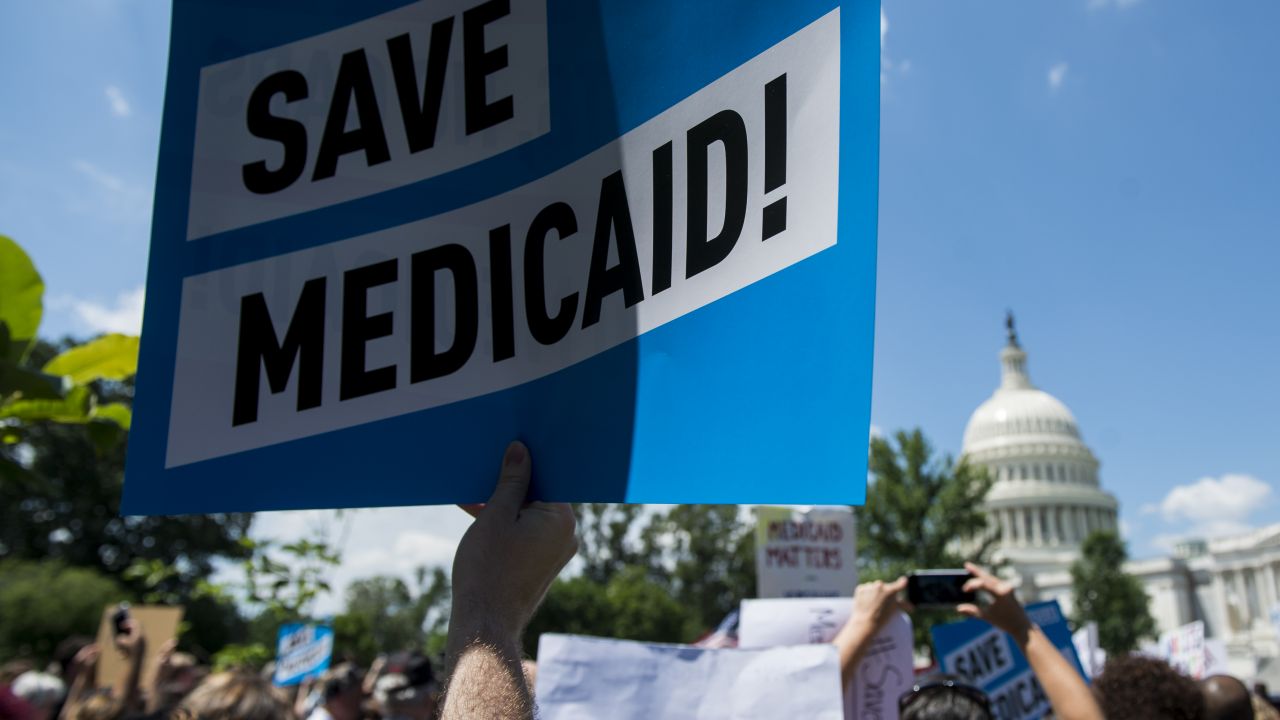
Medicaid cuts proposed in the Republican health plan will have a profound and multifaceted impact on state and local communities. These cuts will not only strain state budgets but also directly affect the healthcare infrastructure, the workforce, and the ability of communities to access vital services. The ripple effects of these changes will be felt across the spectrum of healthcare providers and patients.
State Budgetary Strain
The projected reduction in Medicaid funding will necessitate significant budget adjustments at the state level. States rely heavily on Medicaid reimbursements to fund essential healthcare services. Decreased funding will directly impact the ability of states to maintain current service levels. For example, states might be forced to cut programs like home healthcare or preventative care, leading to increased healthcare costs in the long run.
Reduced Medicaid reimbursements also affect the ability of states to adequately fund essential services like mental health care or substance abuse treatment. This will potentially lead to increased costs for these services in the future, a burden that is not easily borne by all.
Healthcare Workforce Impacts
Medicaid cuts will inevitably lead to reduced employment opportunities within the healthcare sector. Hospitals and clinics that rely on Medicaid funding for patient care will face decreased revenue and, consequently, have to reduce staff. This can result in a shortage of doctors, nurses, and other healthcare professionals in affected areas. For instance, rural communities already facing a shortage of healthcare providers will be disproportionately impacted.
This will worsen access to care for the vulnerable populations within these regions. The healthcare workforce is already strained in many areas. Further reductions in funding will lead to even more significant shortages.
Impact on Healthcare Infrastructure
Medicaid funding is crucial for maintaining healthcare infrastructure, including hospitals, clinics, and other facilities. Decreased funding will force facilities to reduce services, leading to a degradation of the healthcare system. The closure of community health centers and the reduction of hospital services in rural areas are highly probable outcomes. This is especially concerning in areas that already lack access to comprehensive healthcare services.
Consequences for Local Hospitals and Clinics
Local hospitals and clinics will be directly affected by Medicaid cuts. Reduced Medicaid reimbursements will lead to decreased revenue streams, potentially leading to hospital closures or service reductions. Clinics may have to reduce their hours or eliminate certain services, impacting the quality of care and access for patients. This could mean that patients have to travel farther for care, increasing their out-of-pocket expenses.
These closures will have a detrimental effect on the local communities that rely on these facilities for essential healthcare. Hospitals and clinics may have to consider increasing fees for other patients to compensate for the reduced Medicaid funding, putting a further burden on the individuals who already struggle with healthcare costs.
Economic Implications of Medicaid Cuts
Medicaid cuts, a central component of many Republican health plans, have far-reaching economic implications beyond just healthcare access. The potential for reduced funding impacts not only the healthcare industry but also individual households and the overall economy. Understanding these effects is crucial for a comprehensive assessment of these proposals.The projected economic impact of Medicaid cuts is multifaceted and potentially significant.
Reduced demand for healthcare services, stemming from limited access to care, could lead to decreased revenue for hospitals and other healthcare providers. This, in turn, could affect job security within the healthcare sector, potentially resulting in job losses. Furthermore, the financial strain on individuals and families losing Medicaid coverage could have a ripple effect on the broader economy, affecting consumer spending and overall economic activity.
Projected Impact on the Healthcare Industry
Reduced Medicaid funding directly translates to reduced revenue for healthcare providers. Hospitals and clinics that rely heavily on Medicaid patients will likely experience significant financial strain. This could lead to decreased investment in facilities, equipment, and staffing, impacting the quality of care. Hospitals in states with larger Medicaid populations might face closures or mergers due to unsustainable financial pressures, as seen in previous periods of healthcare reform.
The Republican health plan’s proposed cuts to Medicaid are concerning, impacting so many vulnerable people. While navigating these complex policy discussions, it’s helpful to find resources that provide balanced perspectives and useful information, like the best menopause books of the year. Understanding the diverse challenges faced by individuals and families, including those experiencing menopause, can provide a broader context for the larger implications of these healthcare reforms.
Ultimately, these cuts risk undermining essential support systems and healthcare access for countless Americans.
Impact on Employment Rates and the Labor Market
The healthcare sector is a significant employer, and Medicaid cuts could lead to job losses across various levels of care, from hospitals and clinics to home health agencies and pharmacies. A decrease in demand for services could trigger layoffs and reduced hiring, negatively impacting the labor market, especially in rural areas where Medicaid is a vital source of healthcare access.
A loss of jobs within the sector would create a ripple effect in the surrounding economy, reducing consumer spending and affecting related industries.
Financial Implications for Individuals and Families
Medicaid cuts would directly impact individuals and families reliant on the program for healthcare coverage. Without access to affordable healthcare, these individuals face significant financial hardship. They may incur substantial out-of-pocket medical expenses, potentially leading to medical debt, impacting their ability to participate in the broader economy and leading to further economic hardship.
Comparison of Potential Economic Gains versus Losses
| Potential Economic Gains | Potential Economic Losses |
|---|---|
| Reduced government spending on Medicaid. Theoretically, these funds could be redirected to other programs. | Decreased revenue for healthcare providers, potentially leading to closures or reduced services. This would affect employment in the healthcare sector and related industries. |
| Potential for increased efficiency in the healthcare system, if reduced demand leads to cost-saving measures. | Reduced access to care for vulnerable populations, resulting in increased hospital readmissions, emergency room visits, and potentially higher healthcare costs in the long run. |
| Possible stimulation of the private insurance market if individuals seek private insurance coverage. | Significant financial burden on individuals and families, leading to increased medical debt and reduced consumer spending. |
Reduced Medicaid funding could theoretically free up government resources to allocate towards other areas. However, the cost of reduced access to care, increased hospital readmissions, and potential economic hardships of affected families outweigh any perceived short-term gains.
Alternatives to Medicaid Cuts
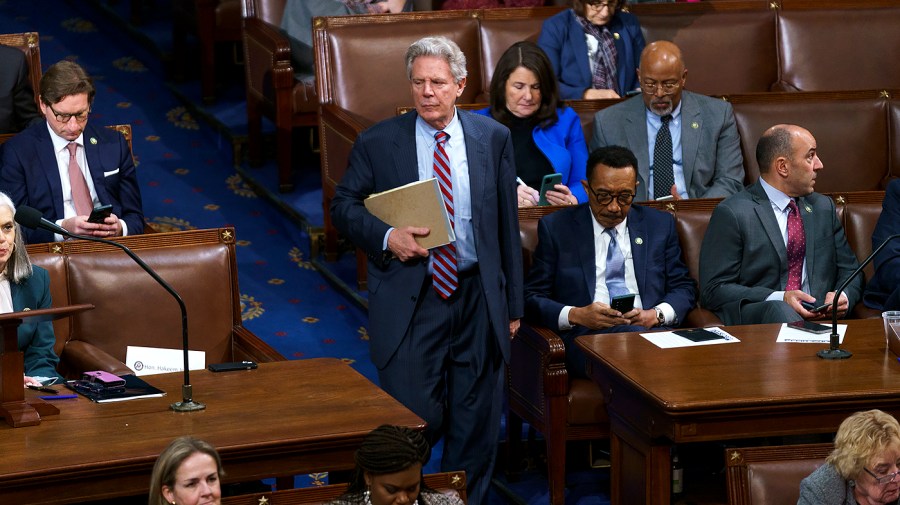
The proposed cuts to Medicaid funding in the Republican health plan raise serious concerns about access to care and the well-being of vulnerable populations. Instead of drastic reductions, a more thoughtful approach to healthcare cost management is essential. This involves exploring alternative strategies that can achieve cost savings without jeopardizing the fundamental role of Medicaid in ensuring access to vital healthcare services.Finding sustainable solutions requires a shift from a purely punitive approach to one that prioritizes efficiency, preventative care, and innovative healthcare delivery models.
These alternative approaches can significantly improve the health of communities while also controlling costs, ultimately offering a more comprehensive and equitable approach to healthcare.
Potential Alternative Approaches
Several alternative approaches to managing healthcare costs exist without resorting to Medicaid cuts. These strategies often focus on preventative care, improving the efficiency of healthcare delivery, and promoting healthy lifestyle choices. These approaches often demonstrate long-term cost savings that outweigh the short-term costs of implementation.
- Increased investment in preventative care: This approach focuses on promoting healthy lifestyles and early detection of diseases, reducing the need for costly treatments later. States like Massachusetts have demonstrated the effectiveness of preventative care initiatives in lowering overall healthcare costs. These programs are typically more cost-effective in the long run by reducing the need for expensive hospitalizations and emergency room visits.
- Improving healthcare delivery efficiency: Streamlining administrative processes, leveraging technology, and consolidating services can significantly reduce costs. Examples of this include electronic health records (EHRs) and telehealth initiatives. These tools can improve communication, reduce paperwork, and enhance coordination of care, leading to more efficient resource allocation.
- Negotiating lower drug prices: The high cost of prescription drugs is a significant contributor to rising healthcare costs. Collective bargaining by state Medicaid programs can potentially negotiate lower drug prices, reducing the financial burden on both patients and the program. This strategy is often successful when multiple stakeholders collaborate.
- Promoting affordable and accessible mental health services: Addressing mental health issues early and effectively can prevent escalating health problems and reduce the long-term costs associated with these conditions. Implementing programs to increase access to mental health services, especially in underserved communities, is a crucial step toward improving overall well-being and reducing healthcare costs.
- Expanding access to affordable housing: Studies show a strong correlation between housing instability and poor health outcomes. Investing in affordable housing initiatives can improve health and reduce the need for expensive medical interventions, leading to cost savings in the long run.
Examples of Successful Strategies
Several states and countries have successfully implemented strategies to reduce healthcare costs without compromising access.
- Massachusetts: The state’s focus on preventative care, including health insurance expansion and community health initiatives, has shown promising results in controlling healthcare costs while improving health outcomes.
- Canada: Canada’s universal healthcare system, while different from the U.S. model, demonstrates that comprehensive coverage can be combined with cost control through efficient delivery and centralized procurement.
- Germany: Germany’s robust primary care system, emphasizing preventative care and strong physician-patient relationships, has proven effective in reducing healthcare expenditures.
Comparison of Effectiveness
Comparing the effectiveness of alternative approaches to Medicaid cuts requires careful consideration of various factors, including the specific context of each state and the chosen strategy. The success of any strategy hinges on the commitment of all stakeholders, from policymakers to healthcare providers, and the availability of resources.
Pros and Cons of Alternative Approaches
| Approach | Pros | Cons |
|---|---|---|
| Increased investment in preventative care | Improved health outcomes, reduced long-term costs | Requires substantial upfront investment, may not show immediate results |
| Improving healthcare delivery efficiency | Reduced administrative costs, enhanced patient care | Requires significant infrastructure changes, potential resistance to adopting new technologies |
| Negotiating lower drug prices | Significant cost savings, improved access to medications | Requires collaborative efforts, may face opposition from pharmaceutical companies |
| Promoting affordable and accessible mental health services | Improved mental health outcomes, reduced healthcare burden | Requires significant investment in mental health infrastructure, requires a shift in cultural perceptions of mental health |
| Expanding access to affordable housing | Improved health outcomes, reduced healthcare costs associated with housing instability | Requires significant investment in affordable housing initiatives, may face challenges in implementation |
Public Opinion and Political Response
The proposed Medicaid cuts in the Republican health plan have ignited a firestorm of public and political debate. Public opinion on these cuts is sharply divided, with significant concern about the potential impact on vulnerable populations. The political response has been equally intense, with interest groups and advocacy organizations mobilizing to either support or oppose the plan, shaping the narrative and influencing the legislative process.The political landscape surrounding the Medicaid cuts reflects a complex interplay of ideological positions, economic realities, and deeply held beliefs about healthcare access and social responsibility.
Understanding the arguments used by both sides, as well as the political strategies employed by various groups, is crucial to assessing the potential for legislative change.
Public Opinion on Medicaid Cuts
Public opinion polls consistently reveal a significant portion of the population expressing opposition to the proposed Medicaid cuts. Concerns often center on the potential loss of access to essential healthcare services, particularly for low-income individuals, children, and seniors. A large segment of the population is likely to be directly affected by these changes, leading to a strong and vocal public response.
For example, a recent survey conducted by the Kaiser Family Foundation showed a strong correlation between household income and level of support for maintaining Medicaid benefits.
Political Responses to the Proposed Cuts
The political response to the Medicaid cuts has been swift and multifaceted. Interest groups representing various constituencies, such as labor unions, healthcare providers, and community organizations, have actively campaigned against the cuts, advocating for alternative solutions. They have organized rallies, press conferences, and lobbying efforts to raise awareness and influence policymakers.Furthermore, advocacy organizations, dedicated to protecting the rights and interests of low-income individuals, have intensified their efforts to counter the proposed cuts.
They have used various platforms to educate the public and mobilize support for their cause. For instance, advocacy groups often share compelling case studies highlighting the impact of Medicaid on individuals’ lives.
Arguments Used by Supporters and Opponents of the Plan
Supporters of the plan frequently argue that the current Medicaid system is unsustainable and requires reform. They highlight the rising costs of Medicaid and suggest that the cuts are necessary to ensure the long-term financial health of the healthcare system. They propose that the savings generated from the cuts can be reinvested in other areas, such as improving primary care access.Opponents, conversely, emphasize the vital role Medicaid plays in ensuring access to healthcare for vulnerable populations.
They highlight the potential negative consequences of the cuts, such as increased hospitalizations, delayed care, and a decline in overall public health. They also point out that Medicaid recipients often have limited alternatives for accessing healthcare, and that the cuts could lead to significant hardship for millions of Americans.
Potential for Legislative Changes
The potential for legislative changes in response to public outcry is significant. The strength of the opposition, the mobilization of interest groups, and the public’s demonstrated concern about the cuts all suggest that there is a substantial possibility of legislative modifications. Historical precedent suggests that strong public opposition to proposed legislation often results in changes to the proposed plan.
Potential Long-Term Consequences
The proposed Medicaid cuts in the Republican health plan, while aiming for fiscal responsibility, carry significant potential long-term risks to the healthcare system and the well-being of the population. Understanding these consequences is crucial for a comprehensive evaluation of the plan’s viability and potential impact on future generations.The long-term implications of these cuts are multifaceted and interconnected, impacting not only the immediate access to care but also the broader financial and social stability of communities.
The potential for rising healthcare costs, exacerbated by reduced access to preventative care and essential services, cannot be overlooked.
Potential for Rising Healthcare Costs in the Future
The reduction in Medicaid funding will inevitably lead to decreased access to preventative care, resulting in an increase in the incidence of chronic diseases. This will, in turn, lead to higher healthcare costs in the long run as patients require more intensive and costly treatments. The rising prevalence of preventable conditions, such as diabetes and heart disease, will strain healthcare resources and potentially lead to a significant increase in the overall cost of medical services.
Republican proposals for healthcare often include cuts to Medicaid, a crucial safety net for many. Meanwhile, President Biden’s recent plan to address the Omicron variant, detailed in president bidens new plan for the omicron variant what you should know , highlights the need for proactive strategies to combat emerging health threats. This contrasts sharply with the potential negative impacts of these cuts on vulnerable populations and the overall healthcare system.
Examples of this can be seen in past instances of reduced public health initiatives, where a decline in preventative screenings and health education campaigns directly resulted in a rise in treatment costs.
The Republican health plan’s proposed cuts to Medicaid are concerning, especially considering the skyrocketing costs of essential medications. For example, the price of MS drugs have tripled over the past 7 years, highlighting the growing financial burden on patients. This further underscores the need for robust and sustainable healthcare solutions that prioritize affordability and accessibility for all, not just the privileged few.
These cuts to Medicaid will disproportionately impact vulnerable populations, potentially exacerbating existing health disparities.
Long-Term Consequences for the Health and Well-being of the Population
Reduced access to primary care, specialized services, and mental health support, often provided through Medicaid, can negatively impact the overall health and well-being of the population. The cumulative effect of these cuts will be felt most acutely by vulnerable populations, including low-income individuals, children, and the elderly. Studies have shown a direct correlation between access to healthcare and overall population health.
Reduced access to preventative care and early intervention programs can contribute to a cycle of worsening health outcomes, potentially leading to higher mortality rates and lower quality of life. For example, if a community experiences reduced access to preventative screenings, it can lead to an increase in the incidence of preventable diseases, ultimately increasing the cost of treatment and negatively impacting the health and well-being of the population.
Long-Term Consequences for State Budgets
The Medicaid cuts will have significant, long-term implications for state budgets. While the initial cost savings might appear attractive, the long-term consequences can be substantial. Increased hospital readmissions, higher emergency room utilization, and a rise in uncompensated care can create a cascading effect on state budgets. These increased costs are likely to outweigh any short-term savings from reduced Medicaid expenditures, resulting in a long-term financial burden for states.
A reduction in Medicaid funding can cause a decrease in state tax revenue as the economy weakens due to the loss of jobs and decreased productivity. Moreover, the strain on state healthcare systems will lead to reduced funding for other critical services, potentially impacting education, infrastructure, and public safety.
Potential Impacts on the Healthcare System
Reduced Medicaid funding will have a profound impact on the healthcare system, affecting both providers and patients. Hospitals and clinics that rely on Medicaid reimbursements will face financial difficulties, potentially leading to reduced services or closures. This will exacerbate existing disparities in access to care, particularly in rural areas and underserved communities. The loss of experienced healthcare providers and the reduced availability of specialized services will create a domino effect on the entire system.
Moreover, the potential for increased healthcare costs, and the associated burden on the system, could eventually impact the availability and affordability of healthcare for everyone.
Visual Representation of Data
Visual representations of data are crucial for understanding the potential impacts of Medicaid cuts. They translate complex information into easily digestible formats, enabling policymakers, the public, and stakeholders to grasp the potential consequences of these cuts more readily. These visualizations, when properly designed, can highlight the scale of the potential problem and help in formulating effective solutions.
Potential Increase in Uncompensated Care for Hospitals
The proposed Medicaid cuts will likely lead to a significant increase in uncompensated care for hospitals. This means hospitals will have to absorb the costs of treating patients who cannot afford to pay for their medical services. This increase will directly impact the financial stability of hospitals, potentially leading to reduced services and higher costs for other patients.
This chart illustrates the projected increase in uncompensated care for hospitals. The upward trend demonstrates the exponential growth in uncompensated care expected due to the reduction in Medicaid funding. This can be compared to previous periods of healthcare funding changes, where similar increases in uncompensated care have been observed. For example, during the 2008-2009 economic recession, there was a marked rise in hospital financial stress and uncompensated care.
Projected Reduction in Medicaid Funding
A crucial aspect of the Medicaid cuts is the projected reduction in funding over a ten-year period. This reduction will have a cascading effect on the services available to beneficiaries. This chart illustrates the predicted decline in Medicaid funding over a decade. The steady downward trend reflects the cumulative impact of the cuts, showing how the reduced funding will affect the system over time.
This decline will significantly affect states’ ability to maintain current levels of care and programs.
Potential Impact on Access to Preventative Care
The Medicaid cuts could have a significant negative impact on access to preventative care. Preventative care, such as vaccinations and screenings, plays a critical role in maintaining health and reducing the need for costly emergency room visits and hospitalizations. A reduction in Medicaid funding will directly impact the ability of individuals to access these vital services. This graphic illustrates the potential impact on access to preventative care.
The graph demonstrates a decline in preventative care access across different demographics. This is likely to lead to a higher incidence of preventable illnesses and hospitalizations, ultimately increasing healthcare costs in the long run.
Potential Effects on Various Demographics
The Medicaid cuts will disproportionately affect various demographics. The cuts can impact access to essential healthcare services, leading to negative health outcomes for vulnerable populations. This infographic highlights the potential effects of the cuts on different demographics. It visualizes how the cuts disproportionately impact vulnerable populations, such as low-income families, children, and seniors. These groups face a heightened risk of experiencing negative health outcomes as a direct result of reduced access to essential healthcare services.
Ending Remarks
The proposed Medicaid cuts in the Republican health plan represent a substantial shift in healthcare policy with potentially far-reaching consequences. This analysis has illuminated the complexities of this issue, exploring the historical context, potential impacts, and alternative solutions. The discussion highlights the crucial need for a comprehensive understanding of the proposed changes and their effect on various stakeholders.
Ultimately, the long-term implications for the healthcare system and the American population demand careful consideration.


